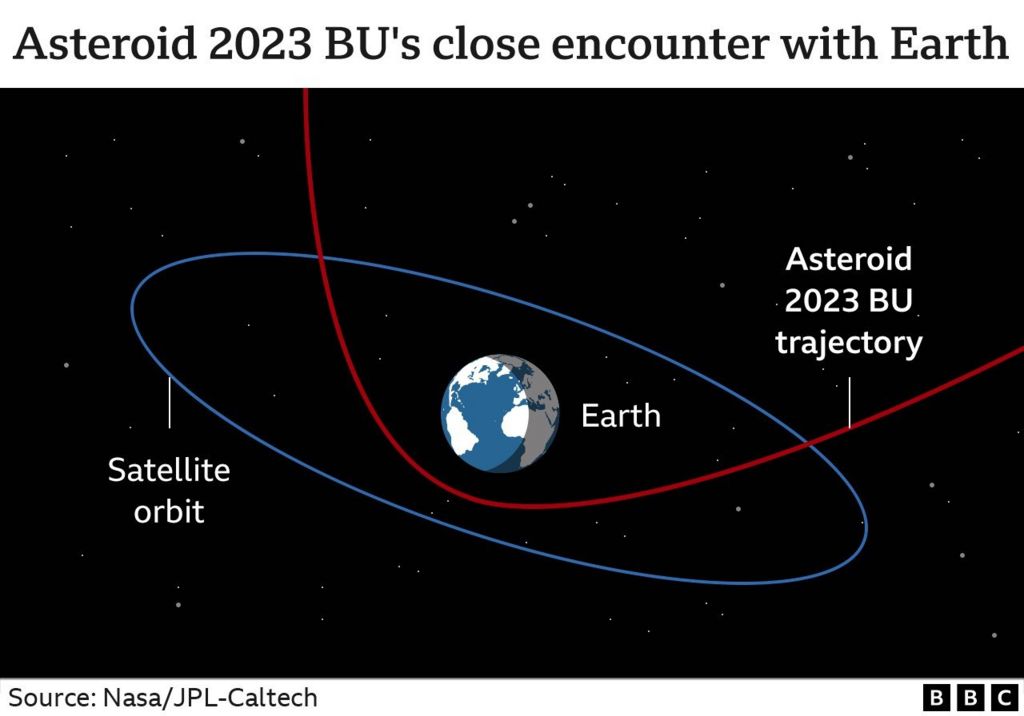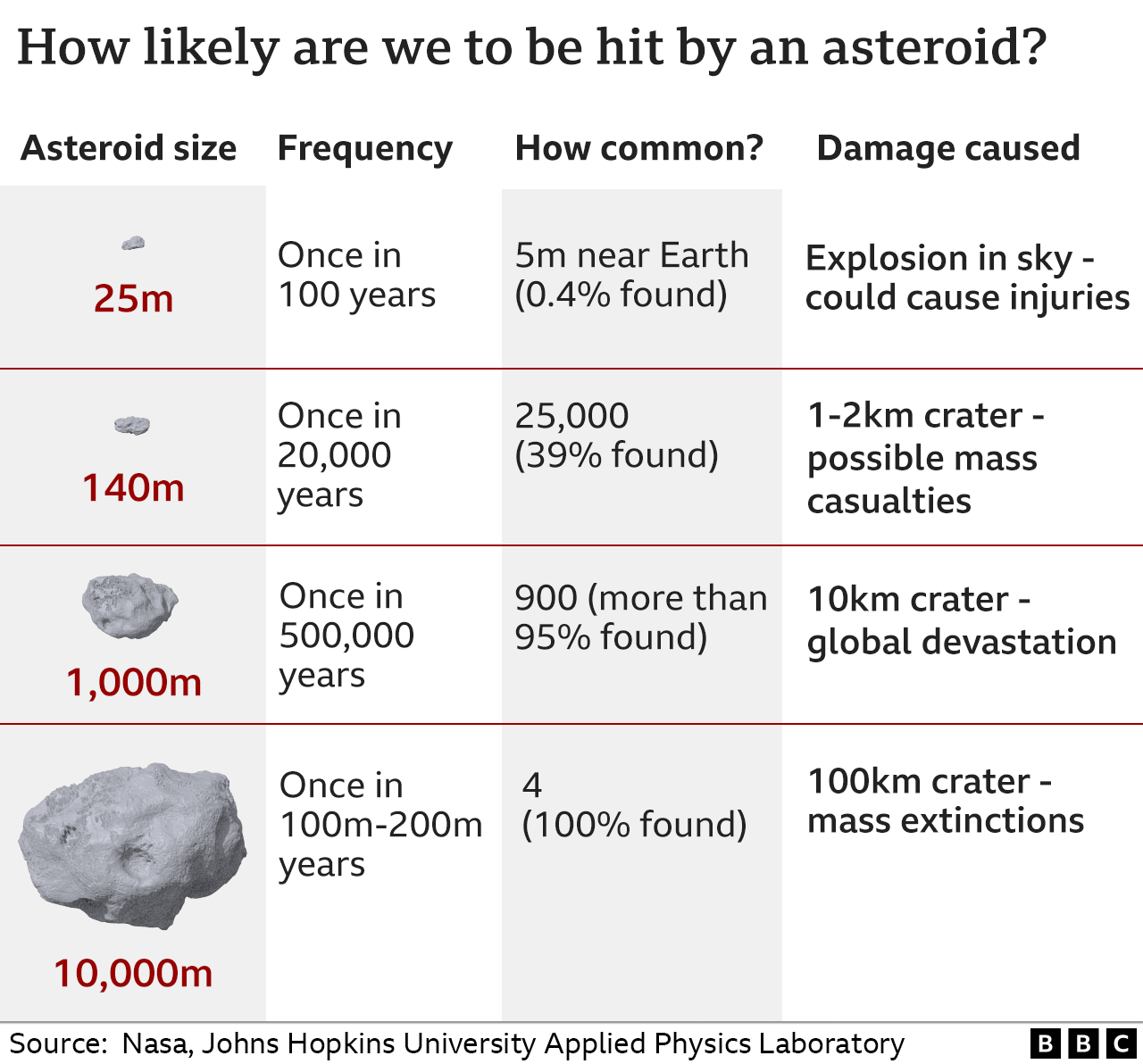A very near miss
Seems during the wee small hours of this morning, our little blue planet had a very near miss, as we narrowly avoided a collision with a speeding asteroid. At 2023-01-27 00:29 UTC, an asteroid codenamed “2023 BU” came within about 3,589 kilometres of the planet’s surface, around the southerly tip of South America. To put that in perspective, that is roughly the same distance as a flight from London to Cairo!
The object weighing an estimated 30 to 40 tonnes, measuring between 3.5 to 8.5 metres across and travelling at an estimated 9.3 kilometres per second (relative to earth) got closer than many satellites. In fact, 2023 BU came within 1/10 of the altitude of a normal geostationary telecommunications satellite – which is approximately 35,786 km.
However, it seems many astronomers reckon that even if it had struck, most of it would have burned out in the earth’s atmosphere and would have literally exploded in the sky. Unpleasant and/or spectacular for those directly beneath it, of course, but not large enough to do any significant damage to the planet as a whole, this time.
What about the next very near miss?
Of course, the scary part is what would happen if the next one were significantly larger? The BBC produced this table using data provided by NASA and the Johns Hopkins University…
Alteration to the asteroid’s circumsolar orbit
Interestingly, 2023 BU used to orbit the sun once every 359 days. But because of its close interaction with earth’s gravitational pull, it has slowed down somewhat and will now orbit the sun every 425 days, as shown in the banner image. Note the animation displays speeds in kilometres per second, relative to the sun, not relative to Earth. The distance in kilometres is the distance between Earth and 2023 BU at any given time. Note how close they become just after midnight on 2023-01-27.
More information
Sources…
Fascinating site to visit, as enthusiastic Brits mount cameras on their shed roofs in order to monitor and share astronomical events…
Banner animation by Phoenix7777 – Own work. Data source: HORIZONS System, JPL, NASA, CC BY-SA 4.0…



